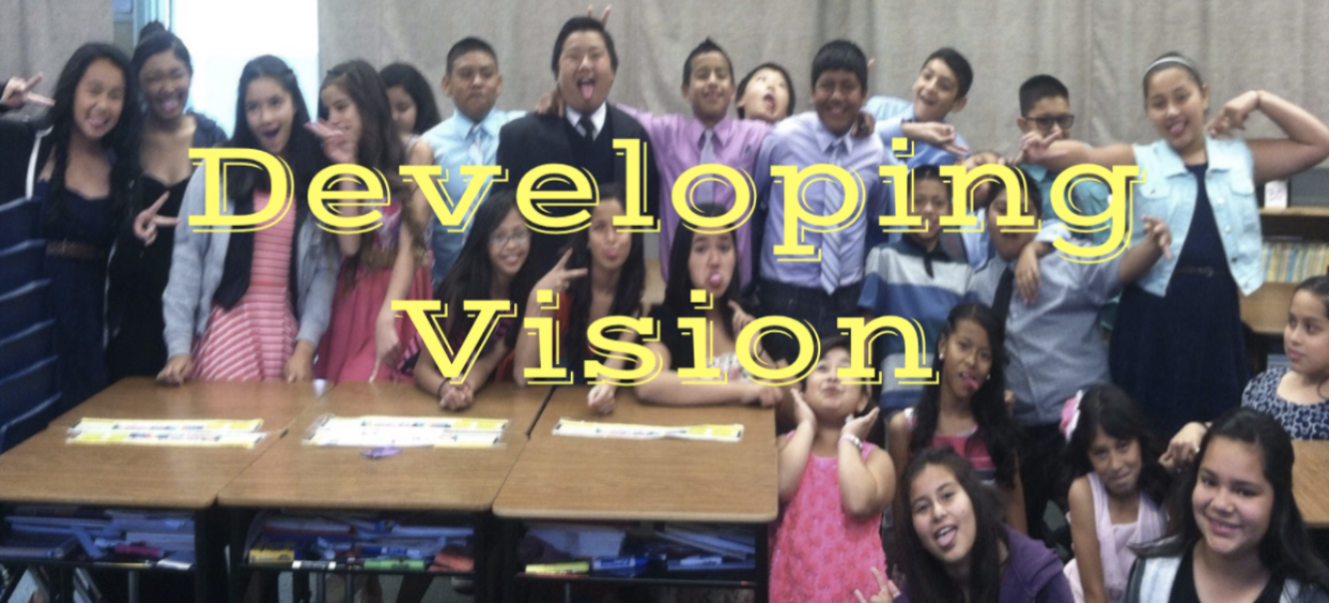
I had the great honor of participating in an organic blogpost series and webinar with EdTechTeam, using the hashtag #HowWillYouLead. A series of email threads, a shared Google Doc, shared Google Slides, and virtual conversations with educators interested in the topic of leadership fueled this collaborative experience. The following blogpost and archived webinar are also available via the EdTechTeam blog and YouTube channel.
Blogpost: 4 Themes Paramount to Leadership
Effective educational leaders are those that reflect, that never stop learning. As such, it is vital that we continually ask ourselves: #HowWillYouLead? In reflecting upon my own leadership journey, speaking with mentors, and observing the path of colleagues, I have identified four themes as paramount to leadership. These themes are: developing vision, committing to pedagogical power, cultivating culture, and creating systems of support.
Developing Vision – Start with WHO
First and foremost, effective leaders develop vision. Leaders must work with stakeholders to create a shared, compelling vision. The vision must start with WHO. As educators, our WHO is students. Everything we do, all decisions we make, must align to the best interest of students. The vision compels, unites, and calls stakeholders to action.

I entered educational leadership because I was inspired by the WHO in the picture above. As I witnessed the power of education to change the lives of these students, I was driven to enter leadership in order to support other educators who also wanted to make a difference. As leaders in education, we must never forget that we are united with educators across the world by a single purpose – to affect positive change for each and every student in our sphere of influence. All work we do and all decisions we make must line up with this vision.
Pedagogical Power – Student-Centered Instruction
As leaders, we must insist on a pedagogical foundation that prepares our students for a future we cannot predict. In an age in which information is available with the touch of a button or via a simple voice prompt to Siri, Google, or Alexa, instructional strategies must go beyond simple rote memorization. We must empower students to think critically, evaluate information, and problem solve.

Effective leaders make the complex simple. They are easy to follow and understand. In order to foster a student-centered learning environment, encourage teachers toward pedagogical power by asking they consider how students create, think critically, collaborate, and communicate each day. When discussing instruction with educators, focus not on the instruction, but on student learning. This lowers the affective filter for teachers and brings the focus back to the vision, the WHO.
Cultivating Culture – Trust Matters
Relationships rooted in trust are the foundation of any successful organization. Effective leaders create a culture that makes people feel psychologically safe and eager to continue growing. What does this look like in practice? Leaders value people by being clear with intentions. They honor staff members’ time. If all content covered in a staff meeting can be communicated via email, effective leaders do not call a meeting. Leaders are in classrooms. They ask teachers what support they need.

These leaders are visible and available. They engage in collaborative conversations. Leaders are with their people more than they are in their office. It matters. All of these practices build trust and result in teachers that will be willing to go the extra mile to expand the impact of the shared vision.
Creating Systems of Support – Build Capacity

As educational leaders, it is our job to create systems of support for stakeholders. I have heard leaders speak about removing barriers, but this focuses on making life easier for students and teachers rather than providing systematic processes that empower learners to solve problems, build resilience, and build efficacy. Students who struggle with grade level content should not receive dumbed down curriculum and modified work, rather we need systems that provide scaffolds to guarantee universal access. Similarly, teachers who need support in lesson design or lack technological proficiency should not be given ready-made textbooks and low level tech programs. There is no silver bullet aside from an investment in our people. Our greatest resource is human capital. Effective leaders support students and teachers by providing training, coaching, and time to collaborate. Leaders that spend their funding on building capacity of teachers and students create sustainable change.
